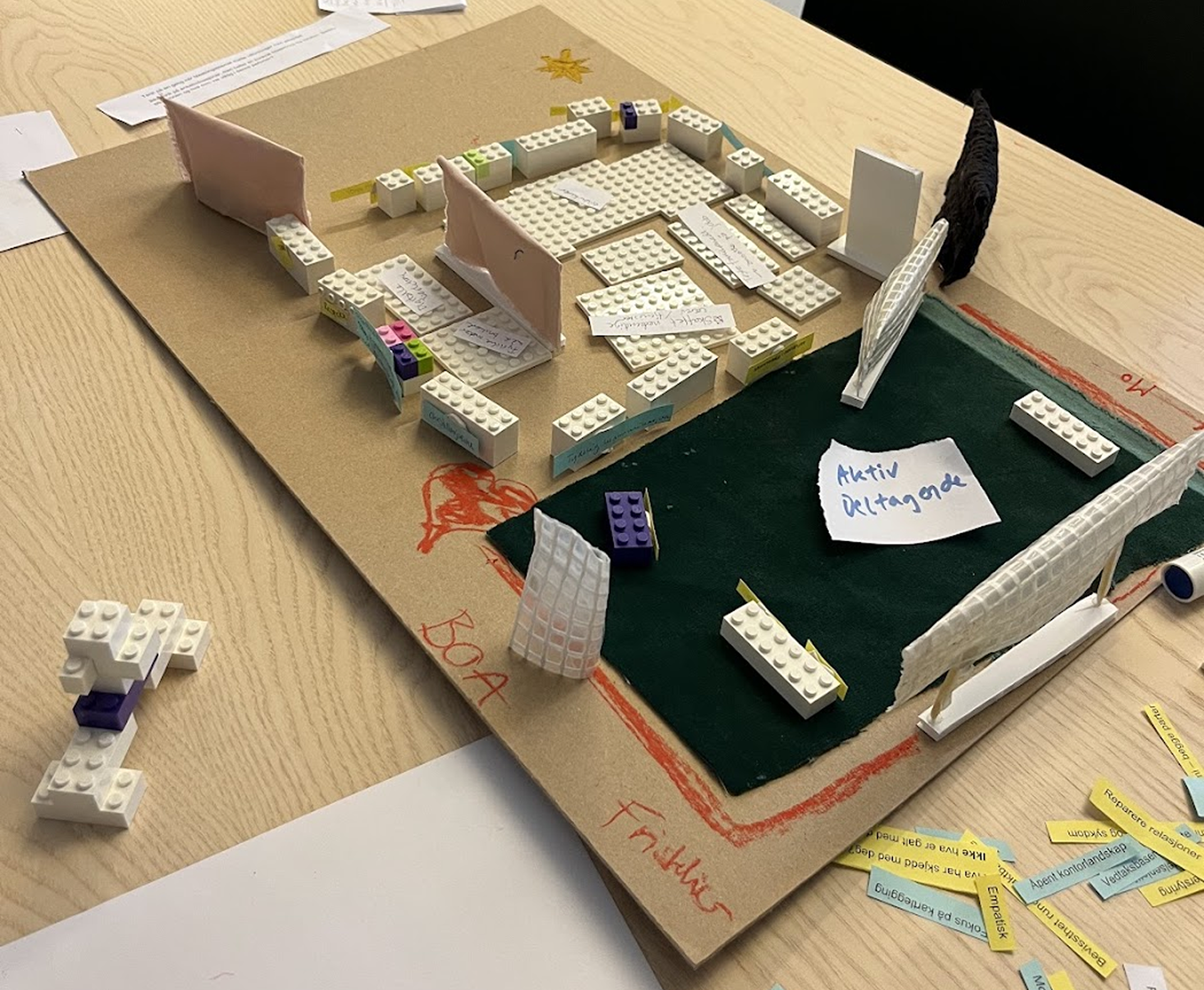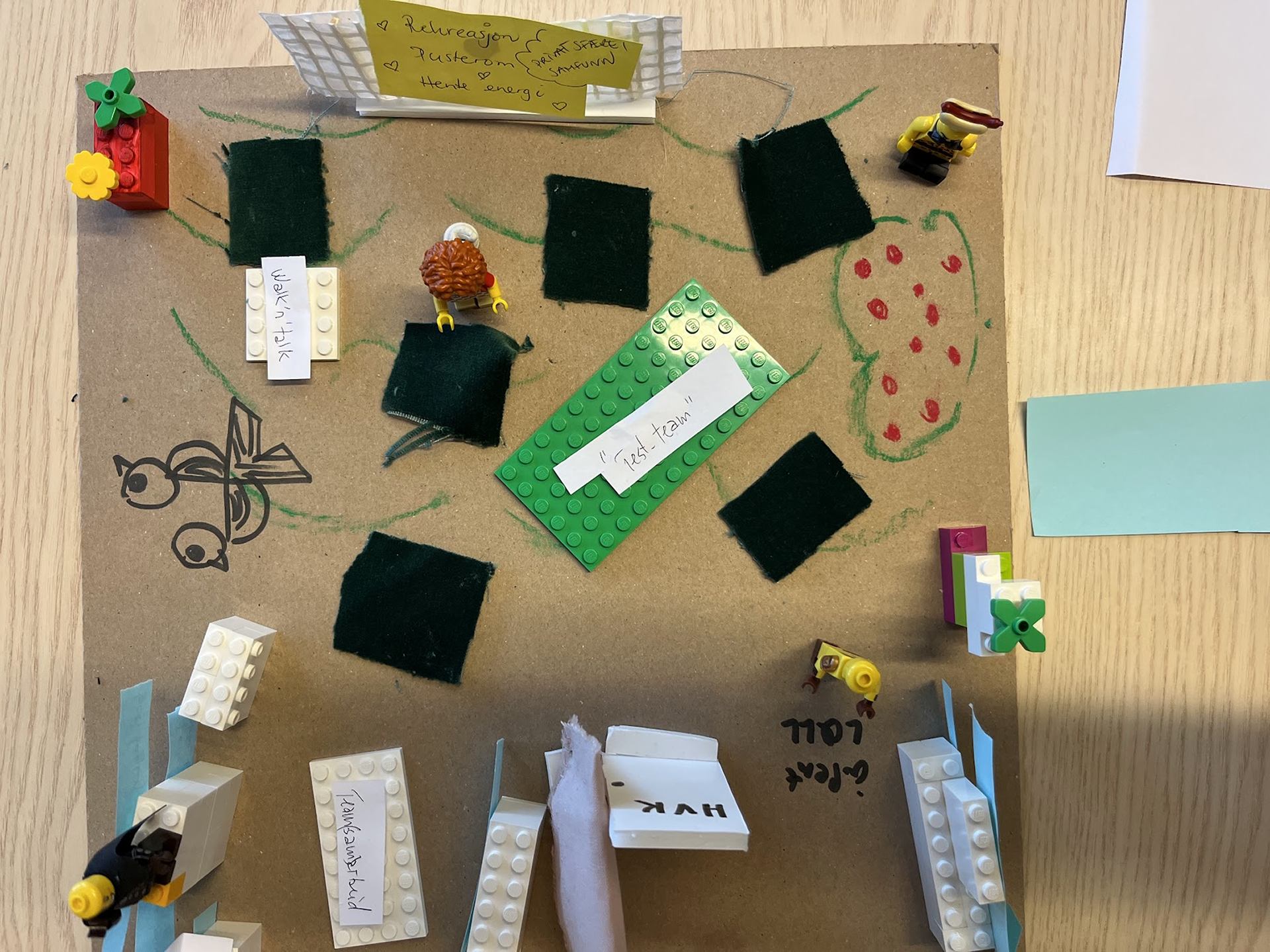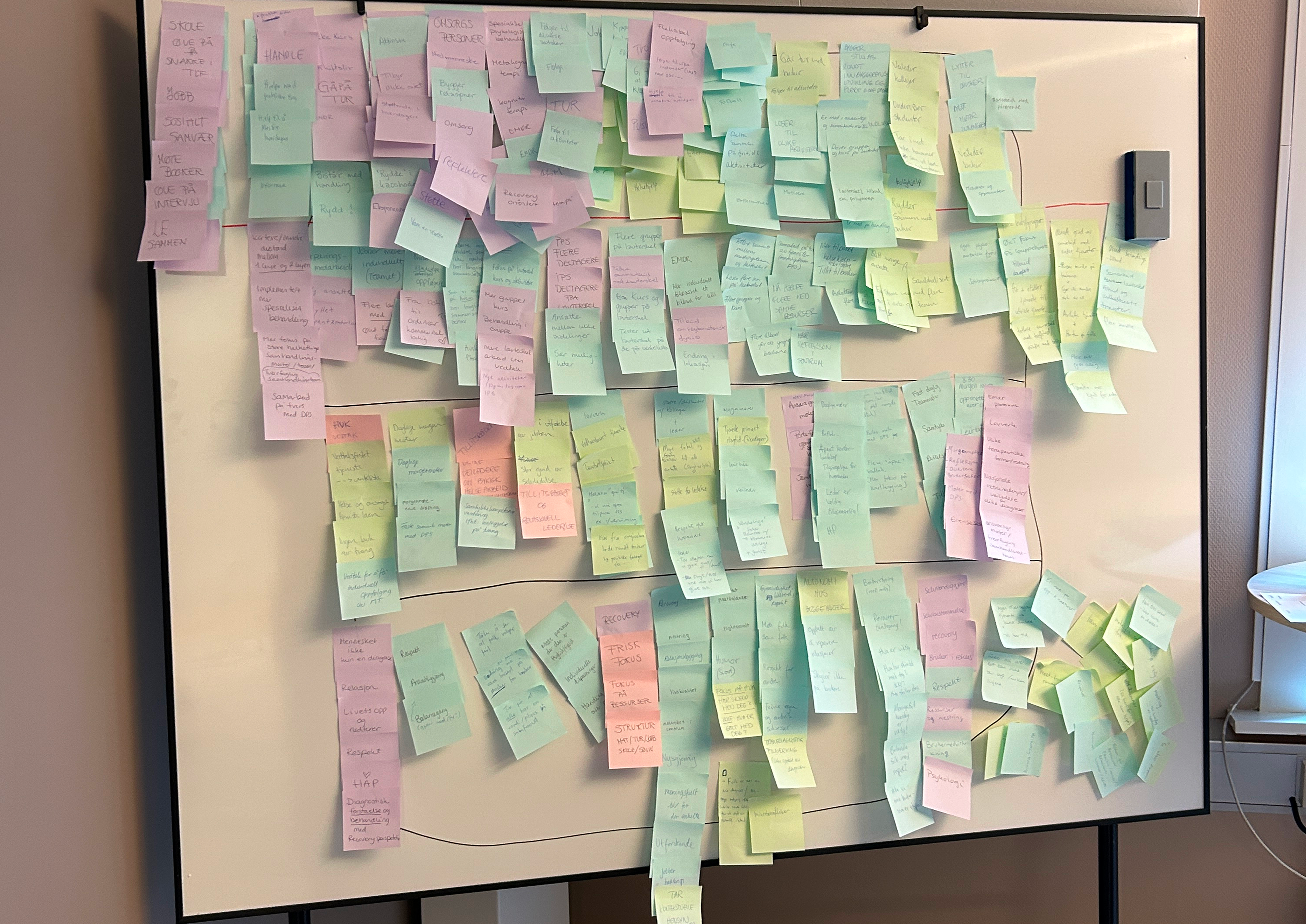Ongoing project in collaboration with Sigrid Amundsen Kversøy for Mestringsteamet in Trondheim Kommune
How can we describe a health service where support is deeply individualized, shaped by professional judgment and shared values rather than protocols and standardized procedures?
This was the question we had to ask ourselves in the fall of 2024. For my premaster's project I, together with a fellow designer, collaborated with Mestringsteamet, a mobile health service in Trondheim Kommune. The team supports individuals with a long-term need for care. They provide practical help, mental support, activities and other services to help their users manage their daily lives. In 2020, Mestringsteamet began offering EMDR-therapy, a service traditionally provided by psychologists or psychiatrists and limited to specialized health services.
The aim of our project was to describe Mestringsteamet's service and how it is connected to the overall mental health system in Trondheim Kommune.
THE PROCESS
We conducted interviews and did observations and started to map out the service provided by Mestringsteamet. Our initial plan was to describe the service experience through user journeys and to visualize a service blueprint to show interactions and collaboration with other parts of Trondheim's health services.
However, we discovered that these methods did not give the complete picture of how Mestringsteamet operated.
Service blueprint describing the EMDR-therapy provided by Mestringsteamet
Comments describing exceptions, considerations, assumptions in each step of the process
EXPLORATION AND NEW DISCOVERIES
We decided to explore other methods that could describe Mestringsteamet and their service more accurately. We used an iceberg-method to show both the visible, such as their specific services, and the invisible, like the professionals' shared values and the organization's' social structures. We used a metaphor (a house) to describe the service Mestringteamet provides and how they connect to other services that they collaborate with. When presenting this to the professionals, the metaphor immediately sparked discussion on how their service can evolve, how they provide the best help and how they can collaborate differently with others.
Iceberg showing the visible parts and the invisible parts of the service.
A house metaphor to describe the service that Mestringsteamet provides, how users enter the service and how it is connected to other parts of Trondheim Kommune's health services
MASTER THESIS
Through our master thesis, we are exploring methods to support collaboration between different actors providing health services in Trondheim Kommune. Mestringsteamet have expressed that they often feel misunderstood by other health providers, and that they struggle to explain what they actually do through their service.
We have facilitated workshops using the iceberg method to raise consciousness about hidden structures within the organization. Many of the professionals found this eye-opening as they don't always reflect on this and how their structures and values differ from other health providers. We have also conducted workshops using the house metaphor, incorporating tangible objects as boundary objects to explore the current state of the service and its potential future development. Our hypothesis is that the use of boundary objects can facilitate collaboration by helping participants with diverse backgrounds and experiences express their perspectives more easily, and by ensuring a shared understanding of the topics being discussed.
We are still in the process of testing and evaluating the results, but initial findings suggest that the method stimulates discussion and makes it easier for participants to propose new approaches to delivering health services and transforming existing systems.




MEETING FUTURE CHALLANGES IN PUBLIC HEALTH
Norwegian health services will need to evolve to meet the public needs in the upcoming years. As the hospital-based care is overcrowded, municipal services may need to provide services for an increasing amount of people. Municipal health services need to rethink how they provide support in order to meet the needs of everyone who requires help. This demands strong collaboration and adaptable healthcare systems that can respond to people with diverse needs. To achieve this, I believe we also need to rethink how we describe services, how we talk about them, and how we collaborate. The motivation behind this master's thesis is to explore unorthodox methods that can support this shift and make it easier for professionals from different backgrounds to work together in providing high-quality services to their users.